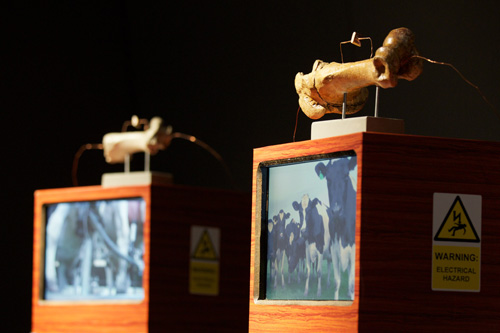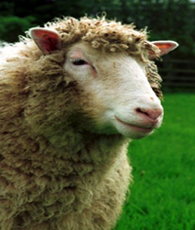 |
| What is Nanotechnology? |
Nanotechnology is the study of the branch of technology that
deals with the dimensions of nanometers of atoms and molecules (National
Nanotechnology Initiative 2017). This week’s topic was definitely interesting
because usually nanotechnology to me seems like it only deals with technology
and science. This allowed me to see the insight into how artists use
nanotechnology as well, just like Professor Vesna.
 |
| Ted Talk. Paul Rothemund |
In the Ted Talk by Paul Rothemund, he showed us how DNA
folding can effect the output of things. From taking small molecules and
changing the different strands of DNA, there could be a big difference on what
the product outputs as. For example, he showed us images of different people
and then changed the DNA sequence of it which then produced a different human,
and changing even more of the DNA sequence would make a dog or even a tree. He
showed us that each molecule is carried out in one way or another and then
later on it is either removed or used.
Similar to this is the work done by Paul Thomas and Kevin
Raxworthy where they explore the comparisons of life and death by analyzing a
single cell. This tries to answer the questions of what constitutes living.
This attempts to redefine the meaning of the atom on an atomic level, as currently
an atom is what makes up life today.
 |
| Transjuicer, Boo Chapple. |
Artists in this field work together with scientists and
collaborate on new inventions. One example of this is the project worked on by Boo
Chapple, which is to make speakers out of bone. She did this by working with
bone matrix in order to make the vibration of sound to occur, called the
Transjuicer. (Boo Chapple 2011). This is interesting because artists usually
like to see, touch and feel their art, and with their perspective they are able to
innovate these features on anything. To be able to make sound from bone and
having the idea of making it through bone matrix is something never done
before. These artists go one step beyond even the field of nanotechnology.
The field of nanotechnology would not be as interesting or have such innovations that allow us to see the actual work of the molecules had it not been for artists who work together with scientists to attempt to make the field more "visible".
Works Cited:
“Art in the Age of Nanotechnology.” Artabase. N.p., n.d. Web. 23 Nov. 2012. <http://www.artabase.net/exhibition/2104-art-in-the-age-of-nanotechnology>.
Boo Chappel. The University of Western Australia. August 5 2011. Web. http://www.symbiotica.uwa.edu.au/residents/chapple
Nanotech for Artists Part 1. YouTube. https://www.youtube.com/watch?time_continue=1&v=q7jM6-iqzzE
National Nanotechnology Intiative. “What is Nanotechnology”. Nano.gov. 2017. Web. https://www.nano.gov/nanotech-101/what/definition
Paul Rothemund: DNA Folding, in detail. Ted2008. https://www.ted.com/talks/paul_rothemund_details_dna_folding#t-544111
“Visceral: Interview with Boo Chapple.” Sciencegallery.com. N.p., n.d. Web. 23 Nov. 2012. <http://sciencegallery.com/blog/2011/01/visceral-interview-boo-chapple>.








